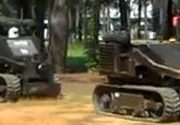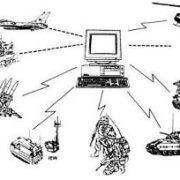T here’s nothing quite like the prospect of a half of a billion dollars to get the blood pumping, the brain scheming, and the pundits pontificating. The President’s ambitious Advanced Manufacturing Partnership (AMP), which includes $70 million for robots, may not revive the American manufacturing sector, but it certainly has provided fodder for the technology media.
here’s nothing quite like the prospect of a half of a billion dollars to get the blood pumping, the brain scheming, and the pundits pontificating. The President’s ambitious Advanced Manufacturing Partnership (AMP), which includes $70 million for robots, may not revive the American manufacturing sector, but it certainly has provided fodder for the technology media.
Frank Tobe’s Everything Robotic blog uses the occasion of the President’s announcement to ponder the future of robotic manufacturing in the US. He points out that it wasn’t until this year that Obama specifically targeted growth of robotic manufacturing as a goal.
Tobe points out that the money promised by AMP may fall victim to political considerations. He also worries that not enough Americans are pursuing careers in science, technology, engineering and math, a problem being tackled by the STEM Education Coalition.
The unstated but obvious question in Tobe’s blog post, and in many other articles discussing AMP, is “Will any amount of money bring manufacturing back to the US?” It’s realistic to expect robots to be designed and developed here, but if the robot market explodes, as Bill Gates has predicted, is it reasonable to expect them to be mass-produced in America?
Tobe quotes at length from Professor Suzanne Berger’s intriguing article, Why Manufacturing Matters, which appears in MIT’s Technology’s Review. She argues, rather persuasively, that manufacturing can thrive in a high-wage environment. For example, Germany, which has higher wages than the US, actually has a manufacturing surplus with China.
Berger maintains than the newer technologies like “wind and solar, biotech, new materials, batteries…” (and presumably robotics) are characterized by “tighter integration of innovation and production.” In other words, the current model of separating R&D from manufacturing and outsourcing them to whatever country has the most effective and economical workforce may not be viable for these “emerging sectors.” When one considers newer manufacturing technologies, which hold out the promise of lowering costs, the prospect of domestic-made goods seems more practical.
It’s an interesting idea. In these past few years, there has been more than one occasion, that has made companies question the wisdom of having supply chains stretched around the world. The Chinese celebrate their New Year, and, as a result, emergency aid agencies can’t get enough tents to a devastated Haiti. Some people commit suicide in Asia, and people in the US are put on waiting lists for smartphones.
The New York Times article, In Search of a Robot More Like Us, sees another problem in creating a robot population explosion. The President’s robotic initiative specifically promotes mechanical arms and hands, but the article points out that this is only the “first step.” To fulfill Bill Gates’ vision of a robot in every home, we need robots that are “…flexible enough to do many of the things humans do: fold laundry, cook, or wash dishes.”
Researchers in artificial intelligence, autonomy, and situational awareness will recognize this familiar problem. Robots are very smart about some things, but other tasks that humans find easy – such as retrieving a quarter from a pants pocket – are enormously difficult.
The article repeatedly states that no software has yet been developed that is powerful enough to mimic the “flexible perception” of even a human infant. This software gap hinders the development of the hardware. The New York Times cites the example of an ambitious robot arm that was to go on the International Space Station. The arm did not meet the program goals. They run the following quote from one of the researchers:
“We’re in a funny chicken-and-egg situation,” Dr. Brooks said. “No one really knows what sensors or perceptual algorithms to use because we don’t have a working hand, and because we don’t have a grasping strategy nobody can figure out what kind of hand to design.”
In addition to the economics of outsourcing, a variable political environment, a poorly educated workforce, and technological barriers, there is yet another problem to boosting American robotics manufacturing. How many articles about robots have you seen with the lead, “Would you trust a robot to…” In other words, even if robots can adequately perform a specific task, will people accept it? Applications may falter because of unreasonable anxiety, outdated attitudes, and institutional intransience (see previous blog post, P. W. Singer, Tight Budgets, and the Future of Robots).
The most obvious contemporary example of this is the FAA’s ban on UAV flight in American airspace. If you don’t think that this may be an obstacle to the US maintaining its dominance in unmanned systems, just ask a UAV developer their opinion of the ban, and step back.





